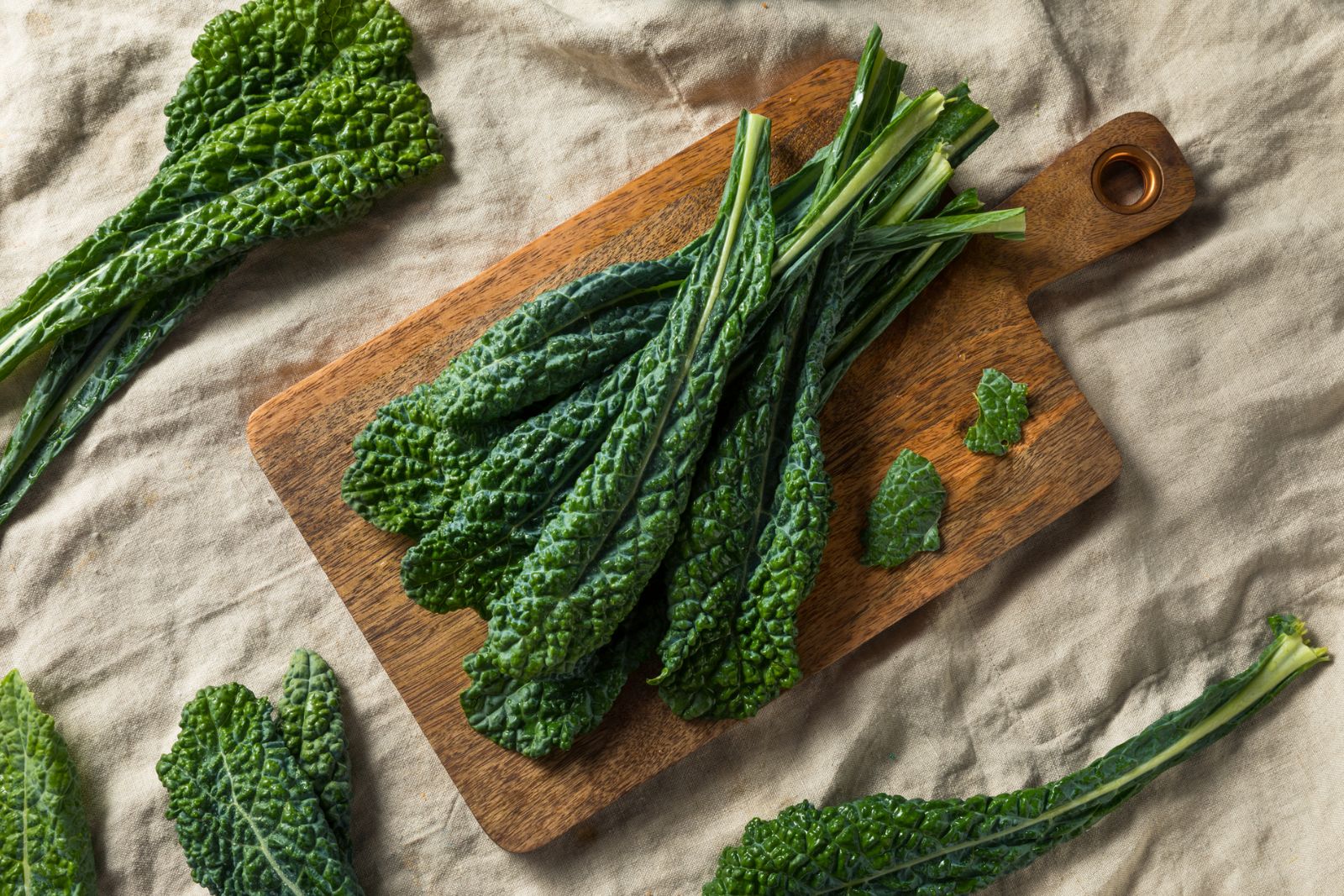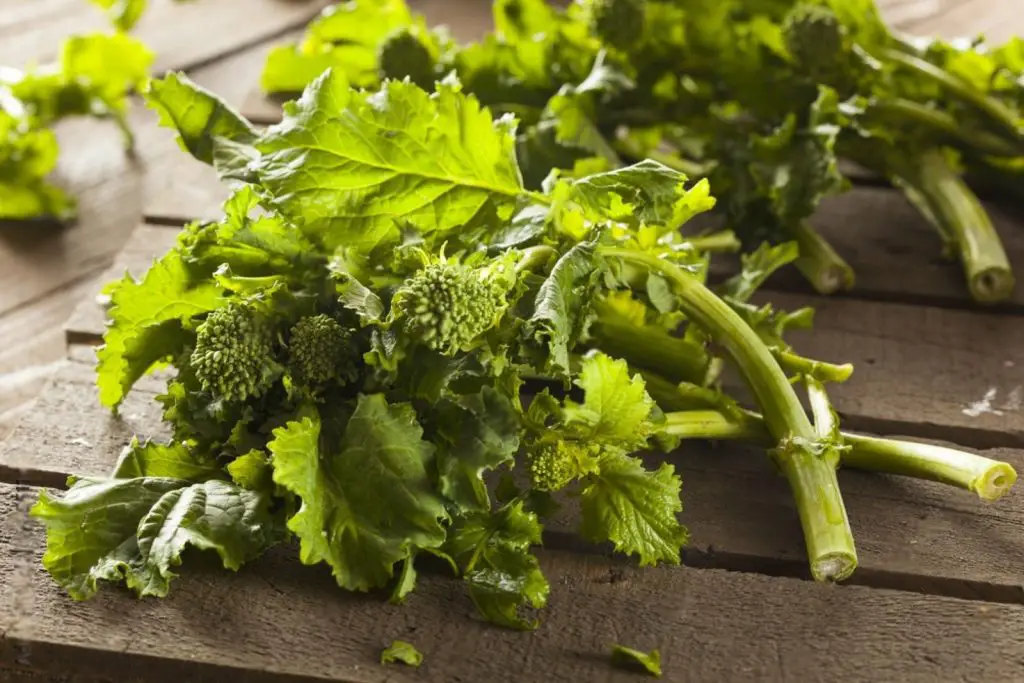
Cavolo nero, a dark and leafy vegetable that hails from the cabbage family. Also known as Tuscan kale or black kale, cavolo nero boasts a distinct earthy flavor and a hearty texture that sets it apart. This nutrient-packed green is a favorite ingredient in many Mediterranean and Italian dishes, thanks to its versatility and health benefits. But what if you have an abundance of cavolo nero and want to preserve it for future use? Freezing cavolo nero is an excellent way to extend its shelf life and ensure you always have this nutritious ingredient on hand. Whether you plan to use it in soups, stews, or as a side dish, freezing cavolo nero allows you to conveniently enjoy its vibrant flavors and health benefits throughout the year. Join us as we delve into the world of cavolo nero and discover the best methods for freezing and preserving this beloved vegetable.
Here are the simple steps to freeze cavolo nero:
- Step 1: Select fresh Cavolo Nero Leaves
- Step 2: Wash and Trim the Leaves
- Step 3: Blanch the Cavolo Nero Leaves
- Step 4: Cool and Drain the Leaves
- Step 5: Arrange the Leaves to Freeze
- Step 6: Flash-Freeze the Cavolo Nero Leaves
- Step 7: Package and Seal the Cavolo Nero Leaves
- Step 8: Label and Date
- Step 9: Store in the Freezer
Step 1: Select fresh Cavolo Nero Leaves
Selecting fresh cavolo nero leaves is crucial for achieving optimal results when freezing. Here’s why it’s important:
- Quality preservation: Fresh cavolo nero leaves have a higher nutritional value and better flavor compared to wilted or damaged leaves. Choosing fresh leaves ensures that you freeze the best possible quality of cavolo nero.
- Texture maintenance: Fresh leaves are crisp and tender, which is the desired texture for cavolo nero. Freezing wilted or limp leaves may result in a loss of texture and overall quality.
- Reduced spoilage risk: By starting with fresh leaves, you minimize the chances of freezing leaves that may already be beginning to spoil. This helps prolong the shelf life of the frozen cavolo nero.
When selecting cavolo nero leaves, look for the following characteristics:
- Crispness: The leaves should be firm to the touch, indicating their freshness.
- Vibrancy: Look for vibrant, deep green leaves. Avoid leaves that appear yellowed or discolored, as they may indicate age or deterioration.
- No signs of wilting or damage: Inspect the leaves for any signs of wilting, browning, or bruising. Damaged leaves are more likely to spoil quickly and can negatively affect the overall quality of the frozen cavolo nero.
Step 2: Wash and Trim the Leaves
Washing and trimming the cavolo nero leaves is an important step in preparing them for freezing. Here’s why it’s necessary:
- Dirt and debris removal: Cavolo nero leaves, like any other fresh produce, can accumulate dirt, dust, or other impurities during harvesting, transportation, or storage. Washing them under cool running water helps remove any surface contaminants, ensuring that you freeze clean and safe leaves.
- Hygiene and food safety: Properly washing the leaves reduces the risk of bacterial contamination. It is especially important when consuming the cavolo nero raw or lightly cooked after thawing. Thoroughly rinsing the leaves minimizes potential health hazards.
- Trimming for quality: Trimming the cavolo nero leaves allows you to remove any tough stems, damaged or discolored portions. These parts may affect the texture and taste of the frozen cavolo nero, so it’s best to discard them. Trimming ensures that only the best parts of the leaves are preserved.
To wash and trim the cavolo nero leaves:
- Fill a large bowl or sink with cool water.
- Submerge the leaves in the water and gently agitate them. This helps loosen any dirt or debris.
- Lift the leaves out of the water and inspect them. If there are any visible impurities or damaged areas, remove them by gently rubbing or using a clean kitchen brush.
- Trim off the tough stems at the base of the leaves. You can also remove any discolored or damaged portions.
- Rinse the leaves again under cool running water to ensure all dirt and debris are completely removed.
- Shake off any excess water or pat the leaves dry with a clean kitchen towel.
Step 3: Blanch the Cavolo Nero Leaves
Blanching is a crucial step in the freezing process that helps maintain the quality of the cavolo nero leaves. Here’s why blanching is important:
- Enzyme inactivation: Cavolo nero contains enzymes that can cause deterioration and loss of flavor, texture, and color over time. Blanching deactivates these enzymes, slowing down their activity and preserving the overall quality of the leaves during freezing.
- Color retention: Blanching helps retain the vibrant green color of cavolo nero leaves. The brief exposure to boiling water helps to set the chlorophyll pigment, preventing it from breaking down during freezing.
- Texture preservation: Blanching briefly cooks the leaves, making them slightly tender. This helps preserve the desirable texture of the cavolo nero, preventing it from becoming excessively soft or mushy during freezing.
To blanch the cavolo nero leaves:
- Fill a large pot with water and bring it to a rolling boil.
- Carefully add the cleaned cavolo nero leaves to the boiling water. Make sure not to overcrowd the pot, as this may lead to uneven blanching.
- Allow the leaves to blanch for about 2 to 3 minutes. The exact blanching time may vary slightly depending on the size and thickness of the leaves.
- While blanching, keep an eye on the leaves. They should become bright green and slightly tender. Avoid overcooking them, as this can result in loss of texture and nutrients.
- Once blanched, promptly remove the cavolo nero leaves from the boiling water and transfer them to a bowl of ice water. This stops the cooking process and helps cool down the leaves rapidly.
- Leave the leaves in the ice water for the same duration as the blanching time to ensure they cool down completely.
- After cooling, drain the leaves thoroughly in a colander or on a clean kitchen towel to remove excess water.
Blanching cavolo nero leaves before freezing helps preserve their color, texture, and nutritional value. This step ensures that the frozen cavolo nero retains its appealing appearance and taste when used in future recipes.
Step 4: Cool and Drain the Leaves
After blanching the cavolo nero leaves, it’s important to cool them down quickly and remove excess moisture. Here’s why this step is necessary:
- Halting the cooking process: Transferring the blanched cavolo nero leaves to a bowl of ice water rapidly lowers their temperature, effectively stopping the cooking process. This helps prevent overcooking and ensures that the leaves retain their desired texture and color.
- Preserving color and nutrients: Cooling the leaves in ice water helps preserve their vibrant green color and nutritional value. It halts enzymatic activity and slows down the oxidation process, which can cause color changes and nutrient loss.
- Removing excess moisture: Allowing the blanched cavolo nero leaves to drain thoroughly is essential before freezing. Excess moisture can lead to ice crystals forming during freezing, which can negatively impact the texture and quality of the frozen leaves.
To cool and drain the blanched cavolo nero leaves:
- Prepare a bowl filled with ice water while the leaves are blanching.
- Once the blanching time is complete, carefully transfer the leaves from the boiling water to the ice water. Submerge them fully and gently agitate them to ensure even cooling.
- Leave the leaves in the ice water for the same duration as the blanching time. This ensures that they cool down completely and any residual heat is removed.
- Once cooled, remove the cavolo nero leaves from the ice water and shake off any excess water.
- Place the leaves in a colander or on a clean kitchen towel to drain. Allow them to sit for a few minutes, or gently pat them dry with a kitchen towel. Ensure that they are thoroughly drained to prevent excess moisture during freezing.
Cooling and draining the blanched cavolo nero leaves is essential for maintaining their quality during freezing. This step helps preserve the vibrant color, texture, and nutritional value, ensuring that the frozen cavolo nero leaves retain their freshness when used later on.
Step 5: Arrange the Leaves to Freeze
Properly arranging the drained cavolo nero leaves before freezing is essential for ensuring even freezing and easy portioning when needed. Here’s why this step is important:
- Even freezing: Arranging the leaves in a single layer on a baking sheet or tray allows for even exposure to the cold air in the freezer. This promotes uniform freezing, which helps maintain the quality and texture of the cavolo nero leaves.
- Prevention of clumping: Ensuring that the leaves do not overlap or touch each other prevents them from sticking together during freezing. Clumped leaves can be difficult to separate and may result in uneven thawing or loss of quality.
- Convenient portioning: By arranging the leaves in a single layer, you create a flat surface that makes it easier to portion out the desired amount of cavolo nero when needed. This prevents the need to thaw and refreeze larger portions, which can affect the overall quality.
To arrange the cavolo nero leaves for freezing:
- Take the drained and dry cavolo nero leaves and lay them out on a clean baking sheet or tray.
- Ensure that the leaves are spread out in a single layer, without overlapping or touching each other. If necessary, use multiple baking sheets or trays to accommodate all the leaves.
- Arrange the leaves in a way that maximizes the use of space, but still allows for airflow between them. This helps promote even freezing.
- If you have a large quantity of leaves, you can stack multiple layers, with a sheet of parchment paper or plastic wrap between each layer. However, it’s best to avoid excessive stacking, as it may lead to uneven freezing or clumping.
Step 6: Flash-Freeze the Cavolo Nero Leaves
Flash-freezing is a crucial step in the freezing process that helps preserve the individuality of the cavolo nero leaves and prevents them from sticking together. Here’s why flash-freezing is important:
- Individual freezing: Flash-freezing the cavolo nero leaves on a baking sheet or tray ensures that each leaf freezes individually. This prevents them from clumping together, making it easier to remove and use only the desired amount in the future without thawing the entire batch.
- Quick freezing: Flash-freezing involves freezing the leaves at a very low temperature for a short period. This rapid freezing process helps preserve the texture, color, and nutritional value of the cavolo nero, minimizing the formation of large ice crystals and maintaining its quality.
- Convenience and portion control: Flash-freezing allows for convenient portioning of the cavolo nero leaves. Once they are individually frozen, you can transfer them to a freezer-safe container or bag, and easily take out as many leaves as you need for a particular recipe without thawing the entire batch.
To flash-freeze the cavolo nero leaves:
- Place the arranged baking sheet or tray with the cavolo nero leaves in the freezer. Make sure it is on a flat surface for stability.
- Let the leaves freeze for about 1 to 2 hours, or until they are firm to the touch. The exact freezing time may vary depending on the thickness and moisture content of the leaves.
- Once the leaves are frozen, carefully remove the baking sheet or tray from the freezer.
- If desired, you can transfer the individually frozen cavolo nero leaves to a freezer-safe container or bag for long-term storage. This allows you to free up the baking sheet or tray for other uses.
Step 7: Package and Seal the Cavolo Nero Leaves
Proper packaging and sealing of the frozen cavolo nero leaves are essential for maintaining their quality and preventing freezer burn. Here’s why this step is important:
- Protection from freezer burn: Freezer burn occurs when food is exposed to air inside the freezer, leading to moisture loss and the development of off-flavors. Packaging the cavolo nero leaves in freezer-safe containers or resealable plastic bags helps create a barrier against air, reducing the risk of freezer burn and maintaining the quality of the leaves.
- Preservation of texture and flavor: By removing excess air from the packaging, you prevent the formation of ice crystals on the leaves. This helps preserve the texture, taste, and nutritional value of the cavolo nero, ensuring that it remains fresh and flavorful when you use it in the future.
- Efficient storage: Proper packaging and sealing of the frozen cavolo nero leaves allow for efficient use of freezer space. By using freezer-safe containers or resealable bags, you can stack and organize the leaves neatly, maximizing the available storage area in your freezer.
To package and seal the cavolo nero leaves:
- Once the leaves are fully frozen, transfer them from the baking sheet or tray to freezer-safe containers or resealable plastic bags. Choose the packaging option that best suits your needs and available space.
- For freezer-safe containers: Place the cavolo nero leaves in a single layer, ensuring they fit comfortably without excessive bending or folding. If stacking multiple layers, separate each layer with a sheet of parchment paper or plastic wrap to prevent sticking.
- For resealable plastic bags: Carefully place the cavolo nero leaves into the bag, avoiding overcrowding. It’s best to package them in small portions, depending on your anticipated usage. Remove any excess air from the bag by gently pressing on it or using a straw to suck out the air before sealing it tightly.
- Place the packaged and sealed cavolo nero leaves back into the freezer.
Step 8: Label and Date
Labeling and dating the packages of frozen cavolo nero leaves is a crucial step for organization and proper inventory management. Here’s why this step is important:
- Easy identification: Labeling each package or bag with the contents allows for quick identification of the cavolo nero leaves in your freezer. It helps you distinguish them from other frozen items and prevents confusion when you’re looking for a specific ingredient.
- Rotation and freshness: By dating the packages, you can keep track of the storage time and ensure that you use the oldest leaves first. This promotes proper rotation of your frozen stock, allowing you to consume the cavolo nero within a reasonable timeframe and maintain its optimal freshness.
- Recipe planning and portion control: Knowing the quantity of cavolo nero leaves in each package helps with meal planning and portion control. It allows you to estimate how many leaves you need for a particular recipe or serving size, making it easier to manage your ingredients.
To label and date the packages:
- Use a permanent marker or label stickers to write the contents, such as “Cavolo Nero Leaves,” on each package or bag.
- Indicate the date of freezing by writing the day, month, and year on the label. This will help you keep track of the storage time and prioritize the use of the oldest leaves.
- Make the labels clear and visible, ensuring they won’t smudge or fade over time. If using labels, affix them securely to the package or bag.
- Consider organizing the labeled packages in your freezer based on the date of freezing, with the oldest at the front for easier access.
Step 9: Store in the Freezer
After properly packaging and labeling the cavolo nero packages, it’s time to store them in the freezer. Here’s why this step is important and how to ensure optimal storage conditions:
- Maintaining quality: Storing the cavolo nero packages in the freezer helps preserve their quality, flavor, and texture. Freezing keeps the leaves in a suspended state, preventing spoilage and maintaining their freshness for an extended period.
- Space optimization: Place the labeled cavolo nero packages in the freezer in a flat position. This allows for efficient use of space and makes it easier to stack and organize them. Avoid overcrowding or squishing the packages, as it can result in uneven freezing or damage.
- Freezer temperature: Set your freezer temperature at or below 0°F (-18°C). This low temperature ensures the cavolo nero leaves remain frozen solid, minimizing the risk of thawing and refreezing, which can negatively impact their quality. A freezer thermometer can help you monitor and adjust the temperature accordingly.
- Avoid frequent temperature fluctuations: Try to minimize temperature fluctuations in the freezer by keeping the door closed as much as possible. Frequent opening and closing of the freezer can cause temperature fluctuations, which may affect the quality and longevity of the frozen cavolo nero leaves.
- Proper storage duration: While cavolo nero leaves can be stored in the freezer for an extended period, it’s best to consume them within 8 to 12 months for optimal quality. Over time, the leaves may experience slight changes in texture and flavor, so it’s recommended to use the oldest packages first.
Other related questions
How do you defrost cavolo nero?
To defrost cavolo nero, transfer from the freezer to an airtight container, thaw gradually in the fridge, then use in recipes. Avoid refreezing to maintain quality. Cook for optimal results due to potential texture change.
Can you refreeze cavolo nero?
No, it is not recommended to refreeze cavolo nero once it has been thawed. Thawing and refreezing can degrade the quality and texture of the leaves, leading to a loss of flavor and nutritional value. It is best to use the thawed cavolo nero promptly or store it in the refrigerator for a short period before consumption.
How do I know if the cavolo nero has gone bad after being frozen?
After being frozen, you can determine if cavolo nero has gone bad by examining its appearance, smell, and texture. Look for any significant changes in color, such as browning or dark spots, which may indicate spoilage. A foul odor or slimy texture are also signs of deterioration. It is crucial to discard cavolo nero that exhibits these characteristics to ensure food safety.
Can frozen cavolo nero be used in smoothies or juicing?
Frozen cavolo nero can be used in smoothies or juicing, but it’s important to note that the texture and taste may be slightly different compared to using fresh cavolo nero. When blended, frozen cavolo nero can contribute to a thick and icy texture in smoothies, which can be adjusted by adding more liquid or combining it with other ingredients. Juicing frozen cavolo nero may require thawing beforehand to achieve a smoother consistency.
Can frozen cavolo nero be added to salads or used as a garnish?
Frozen cavolo nero is generally not recommended for adding to salads or as a garnish due to its texture and appearance after thawing. Freezing can cause cavolo nero leaves to become limp and lose their crispness, which may not be desirable for salads. However, thawed and cooked cavolo nero can still be used as an ingredient in various dishes, such as soups, stir-fries, or pasta sauces.
Can cavolo nero stems be used for other culinary purposes before freezing?
Cavolo nero stems can be used for other culinary purposes before freezing. They have a firm texture and a slightly milder flavor compared to the leaves. The stems can be chopped and used in stir-fries, soups, stews, or added to vegetable stocks for added flavor. Consider blanching the stems before freezing to preserve their quality and texture.








